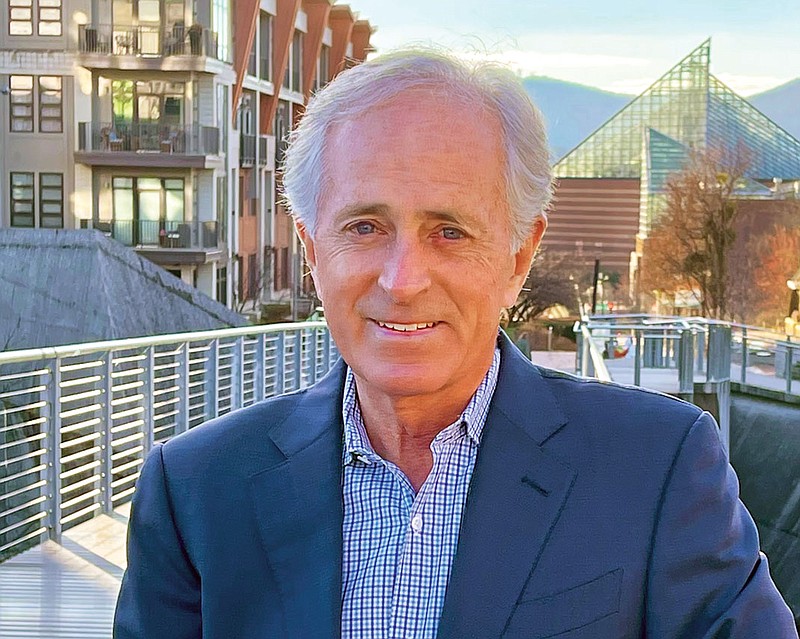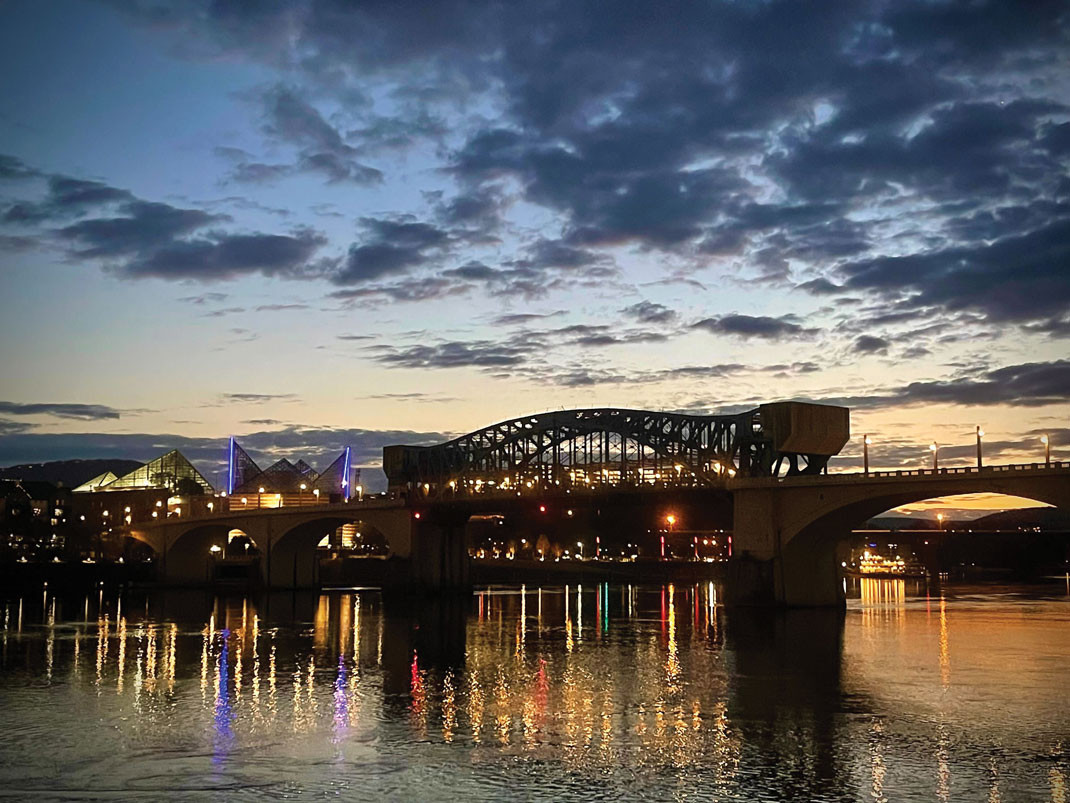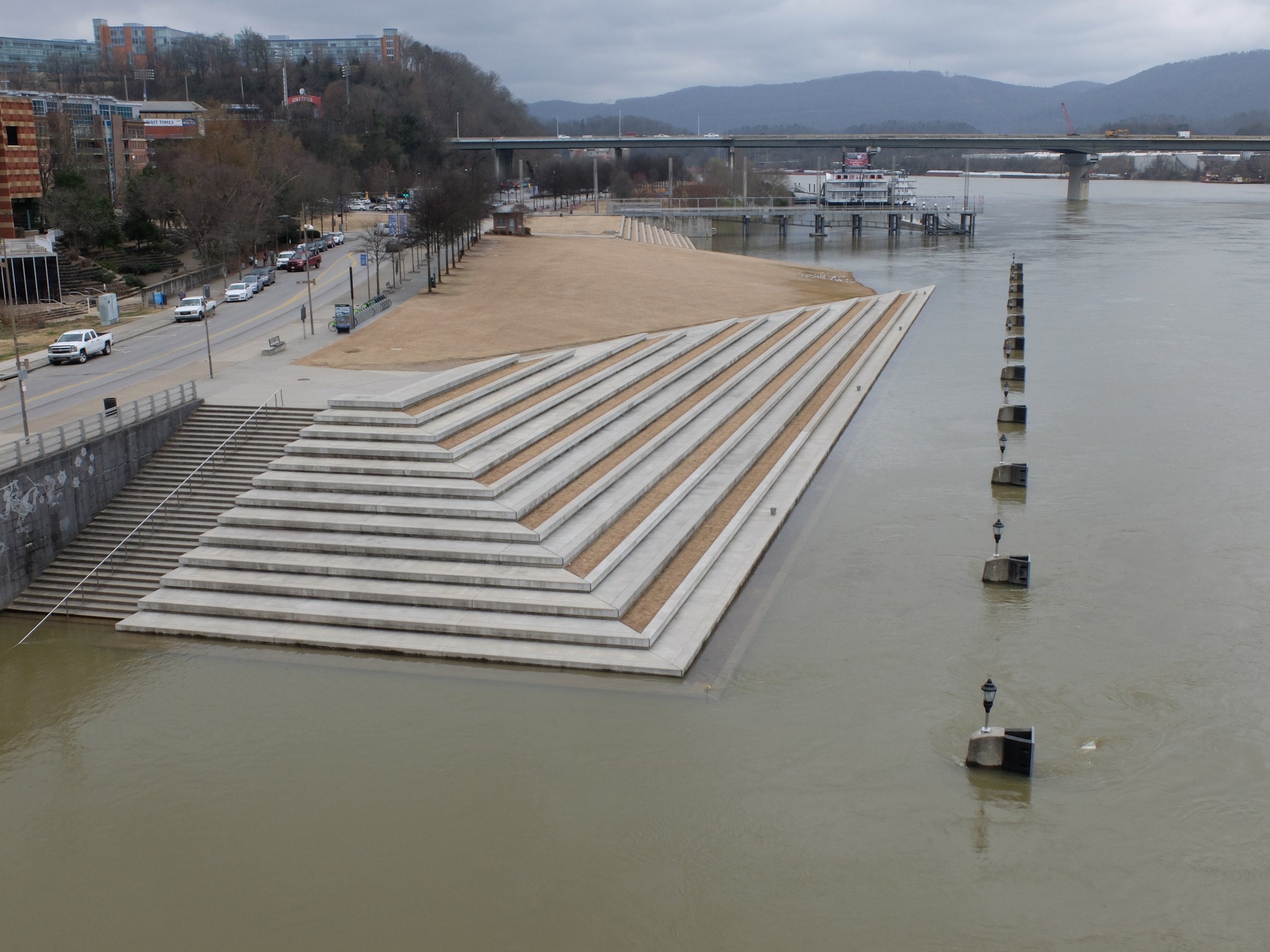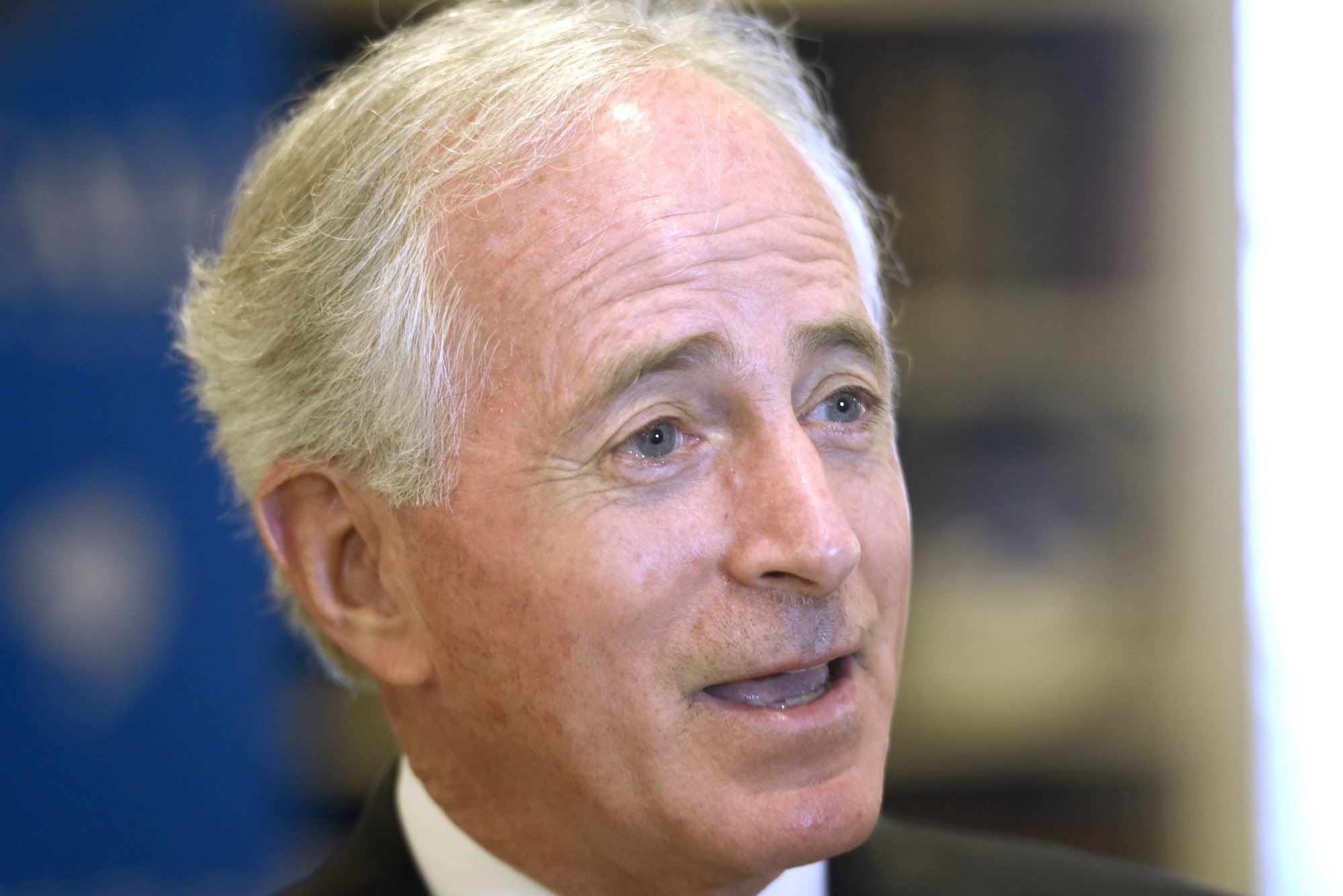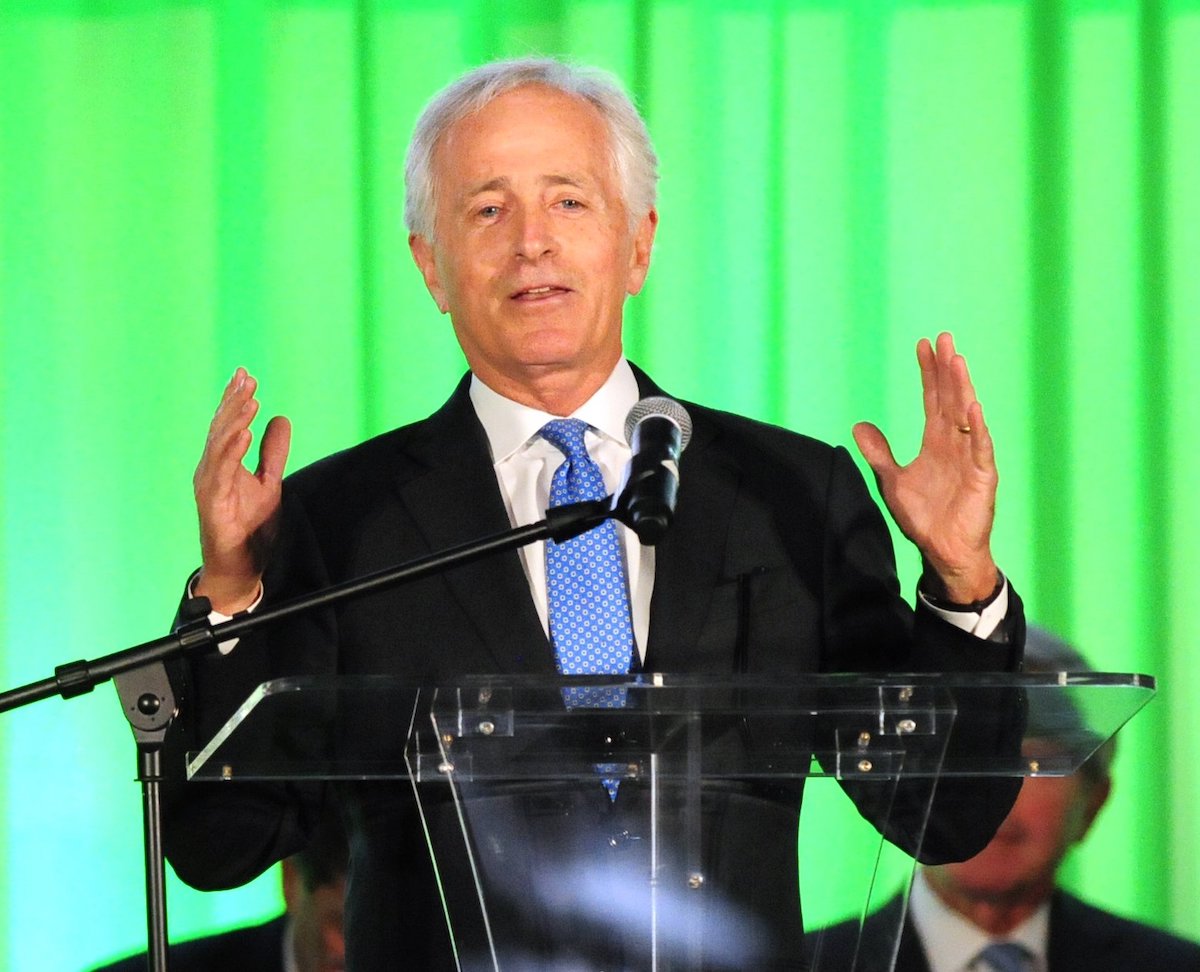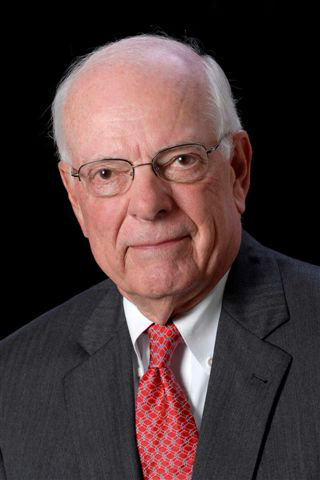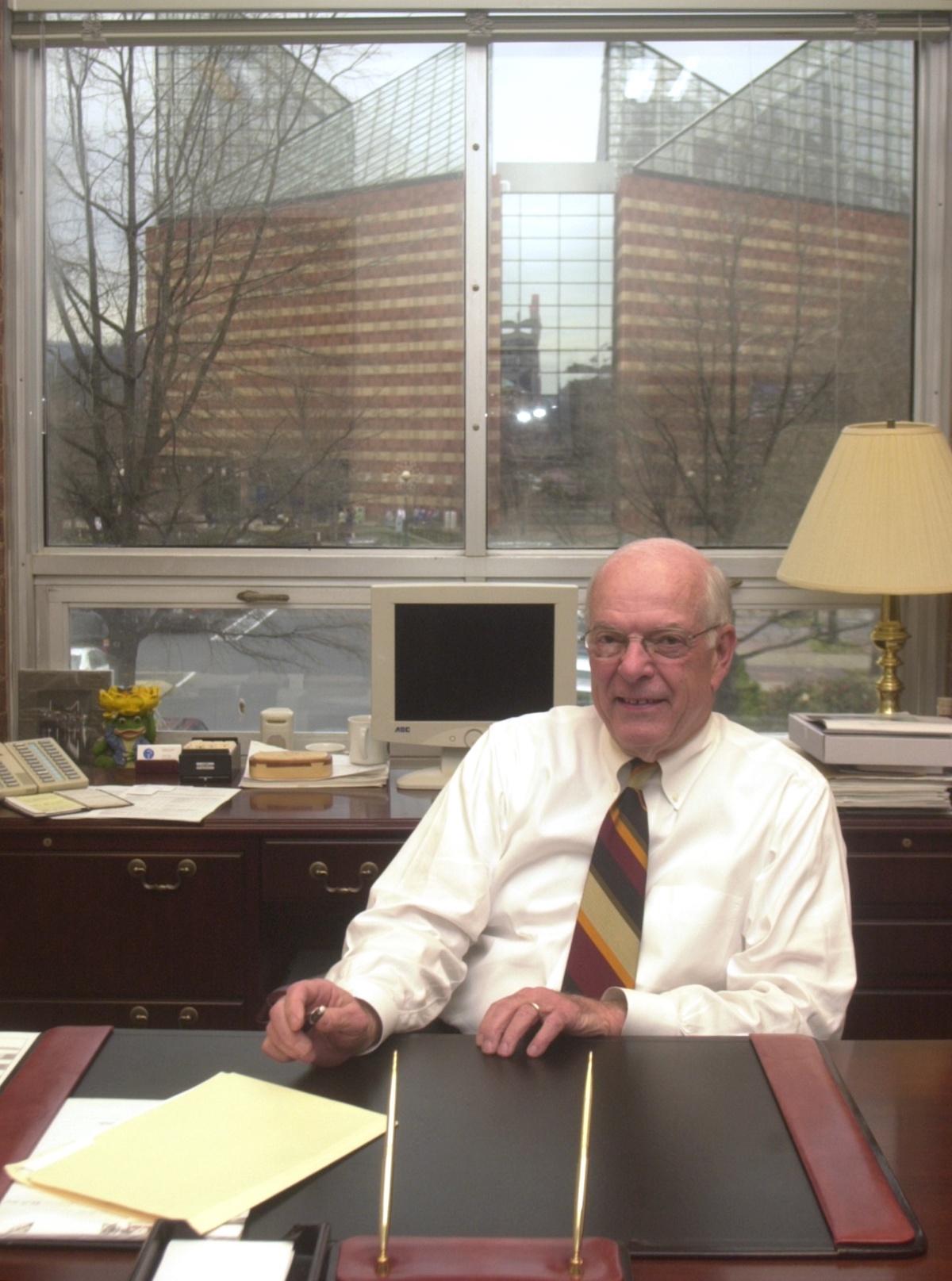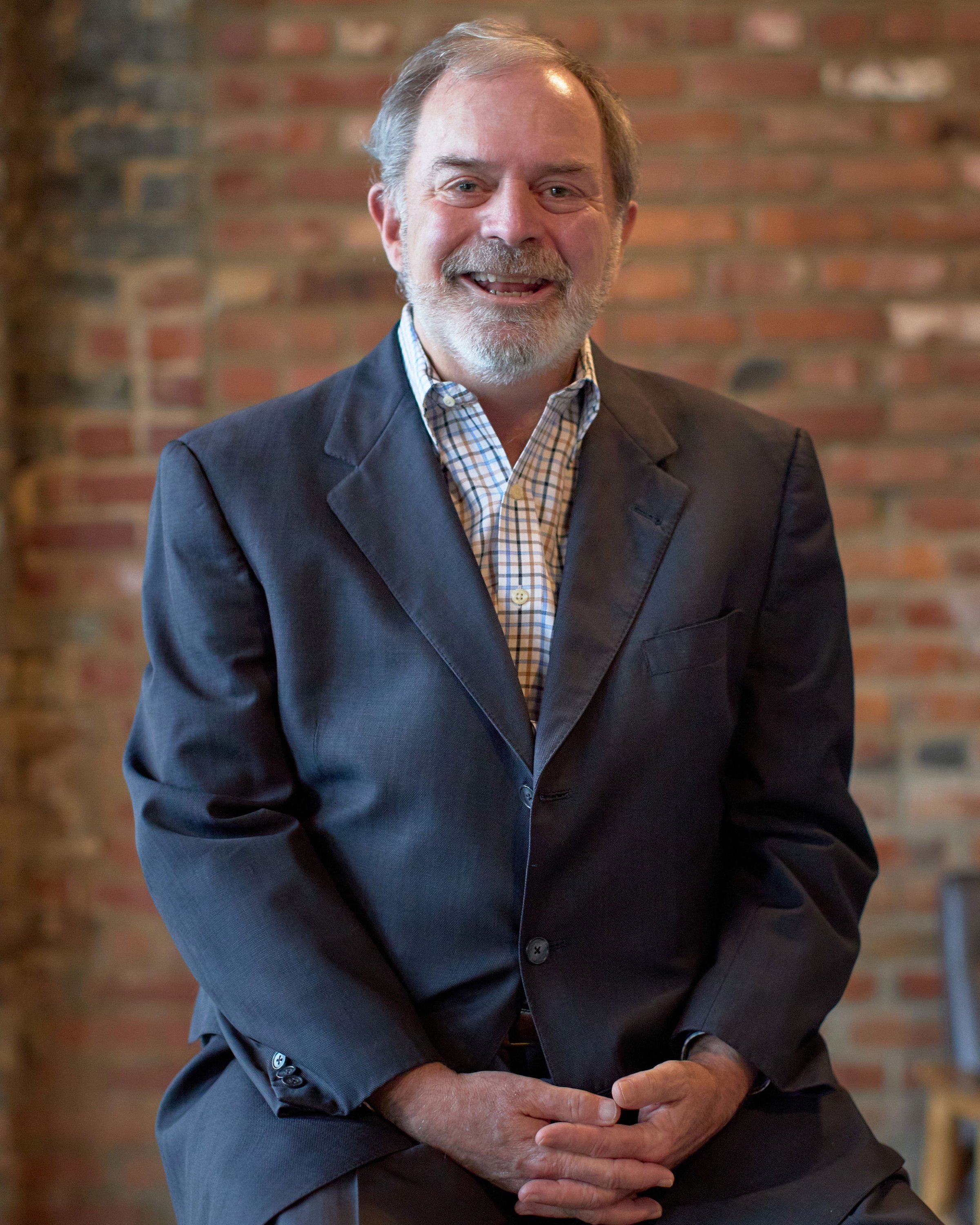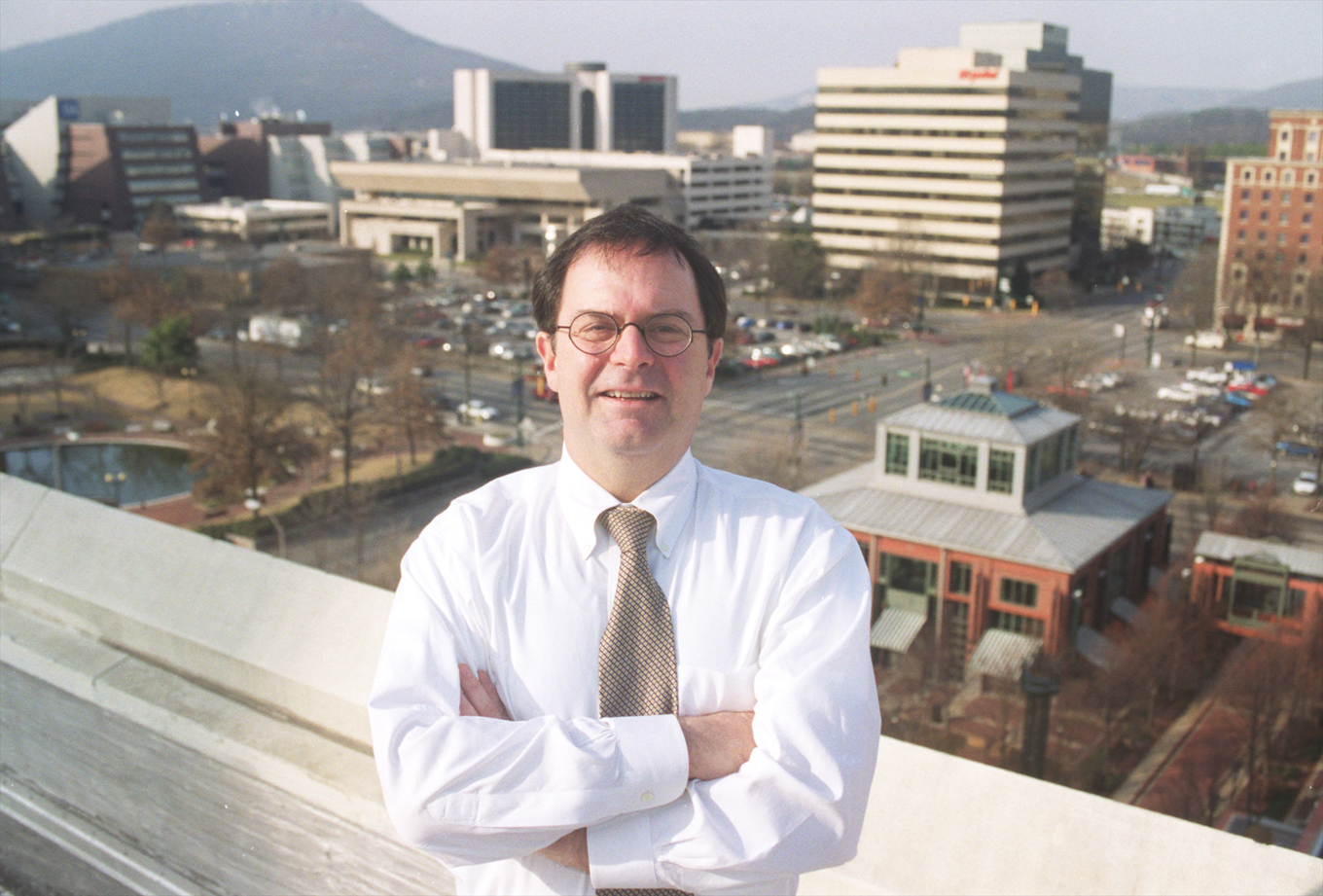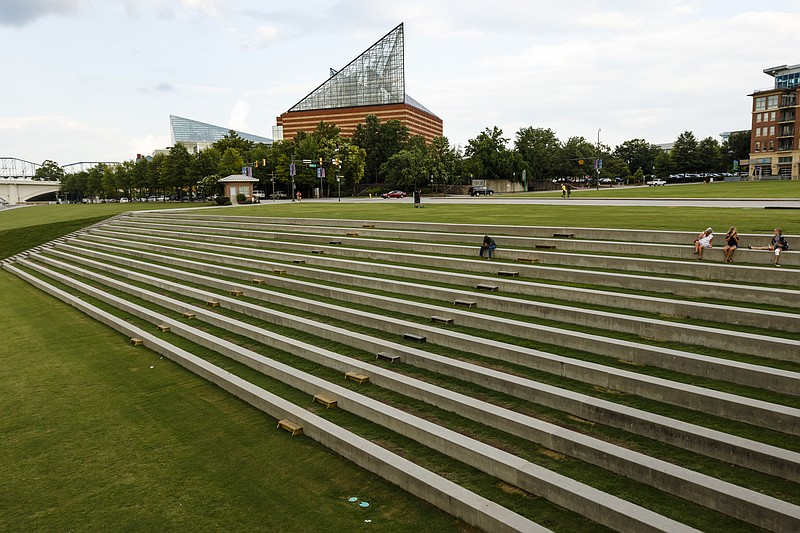When Bob Corker campaigned to become Chattanooga's mayor in early 2001, the former construction company owner and state finance director pledged to build up the airport, local businesses, education and crime control efforts.
For all of his real estate development experience downtown, Corker wasn't initially focused on the central city or the downtown waterfront where the Tennessee Aquarium was luring thousands of visitors to Chattanooga every week. But during his first year in office, Corker shifted his attention.
"I remember standing in a parking lot near the river watching litter blow by and I realized that we were not even close to being connected to the waterfront with the Aquarium," Corker says.
For all its success as the world's largest freshwater museum, the Tennessee Aquarium in Chattanooga remained separated from the river it promoted by a four-lane state highway and surrounding parking lots.
Corker, who had worked under Tennessee Gov. Don Sundquist as head of finance and administration, called his former cabinet colleague Bruce Saltsman, who headed the Tennessee Department of Transportation, to begin working on an alternative to Riverfront Parkway as a highway along the downtown waterfront.
Building upon a master plan that the River City Co. had developed in 2000, Corker worked with Saltsman to offer a widened 3rd and 4th street corridor as another route to allow Riverfront Parkway to be narrowed and made more pedestrian-friendly for aquarium visitors, tourists and downtown workers. The roadway change was key to a much larger vision to develop the downtown waterfront into a signature attraction for Chattanooga with boat docks and piers, water fountains, concert venues, and art and sculpture displays highlighting the city's birthplace and history.
While connecting Chattanooga's biggest tourist attraction to the Tennessee River, Corker also led an effort to better connect the Tennessee Aquarium with two other growing downtown attractions -- the Hunter Museum of American Art and the Creative Discovery Museum.
The overall vision that emerged from a series of public meetings from 2000 through 2002 was touted as the 21st Century Waterfront plan to cover 129 acres of both sides of the river downtown. In his State of the City address after one year in office, Corker outlined a $120 million plan to use private and public funds to develop the waterfront while expanding the Tennessee Aquarium, Hunter Museum and Creative Discovery Museum.
"It proved to be a great idea to bring all of these projects together," recalls Charles Arant, the former president of the Tennessee Aquarium. "It not only made the aquarium more attractive, it also helped make our riverfront and help all of the downtown attractions."
Arant said the recent recognition of Chattanooga as one of the best places to visit in the world by Forbes magazine reflects the success in offering a full range of visitor options.
"A lot of what we continue to see in the growth and appeal of our city traces back to what we were able to do with the waterfront 20 years ago," he says.
Developing a new waterfront vision
Guided by consultants from Hargreaves & Associates in Cambridge, Massachusetts and led by Chattanooga's Planning and Design Studio, hundreds of Chattanoogans participated in a series of meetings that led to the waterfront plans, including a major initiative for public art displays.
At Ross's Landing, where Chattanooga as a city began, plans for a bigger riverside park were developed that included the Chattanooga Green and the Tennessee River Terraces to serve as a setting for the Riverbend Festival and other events. The trailhead of the Trail of Tears also was memorialized and new docking facilities were added to accommodate transient boaters. An expanded marina, water taxis, riverfront cafés, residential units and commercial development soon made the waterfront the "front porch" of the city.
While plans were developed for public places along the waterfront, the 21st Century Waterfront Plan also united three previously separate capital campaigns -- the aquarium, the Hunter and the children's museum.
The Tennessee Aquarium, which opened in 1992 as the world's largest freshwater aquarium, was facing new competition from aquariums opening up only a few hours away in both Atlanta and Gatlinburg, Tennessee. To compete, the aquarium made plans for a $20-$25 million saltwater addition offering a greater variety of fish along with a new butterfly exhibit.
At the Hunter, which was originally built in 1952 and expanded in 1973, museum officials made plans for a $22 million expansion and upgrade. The museum addition was designed by architect Randall Stout and included a new entrance, display area and exhibit space, along with improvements to the original 1905 George Hunter mansion in which the art museum was developed. The 21st Century Waterfront plan also included the construction of a glass pedestrian walkway over the Riverfront Parkway, known as the Holmberg bridge, to connect the Hunter with the Walnut Street bridge area.
And at the Creative Discovery Museum, the 21st Century Waterfront plan helped fund about $3 million in improvements in the river play area and other exhibits, along with an outdoor rooftop addition. The children's museum was originally erected in 1995 at a cost of about $16 million.
Raising money, building plans
As mayor, Corker pledged to raise the money and complete the waterfront projects in the next three years of his term in office.
Ken Hays, a former chief of staff for Corker's predecessor as mayor, Jon Kinsey, headed River City Co. at the time and remembers the vision Corker laid out to quickly develop and implement the waterfront improvements.
"It was a huge challenge but having the support of the mayor and the passion of Bob Corker leading this really made the difference," Hays says. "This is truly an instance where the whole is more than the sum of the pieces."
Corker helped push to create a city hotel tax to pay about half of the planned improvements and led a series of fundraising sessions to collect the other half of the $120 million goal from private donors.
"As we talked with the hotel owners and donors, I assured them that this wasn't a plan that was going to sit up on a shelf someplace," Corker recalls. "This was a plan that was going to be done in 35 months and would generate a tremendous amount of revenue and goodwill for our city."
The speed, enthusiasm and breadth of the plans quickly attracted the attention and funding from a diverse array of foundations, individuals and businesses.
"It really became an extraordinary model of nonprofit collaboration," Creative Discovery Museum Executive Director Henry Schulson says. "Instead of having three independent fundraising campaigns and separate developments downtown, there was a large, integrated campaign to raise not only private funds but to help use a new hotel tax to make the kind of public improvements needed to support and enhance all that was going on downtown."
Schulson says the 21st Century Waterfront plan tied the major downtown attractions on the waterfront together in a way they had not previously been able to do.
The Chattanooga mayor led all 81 fundraising meetings where donors were pitched the plans for the aquarium, the Hunter, the children's museum and major city improvements planned for the waterfront.
"It was truly transformative to see our community create a vision and then make it happen," Corker says. "That's something we were able to build upon and I think helped us to also propel Chattanooga forward as a city where people want to not only visit but to move to and live and work."
Hays says the improvements made with the 21st Century Waterfront helped "put Chattanooga on the map" as an attractive city that was able to turn around its downtown and reshape its future after suffering losses in its manufacturing foundation through the 1970s and 1980s.
"Cities and downtowns are never done and you've got to keep changing and moving ahead to keep communities fresh and dynamic," Hays says. "Like Disney, you need a new ride or attraction every few years to keep people coming back. I think what's made Chattanooga special is that we've done an unbelievable job in urban revitalization and that needs to continue."
READ MORE
* Chattanooga-area legacy attractions offer experiences that high-tech entertainment cannot
* Chattanooga hotels rebound from pandemic, spurring the addition of more lodging options
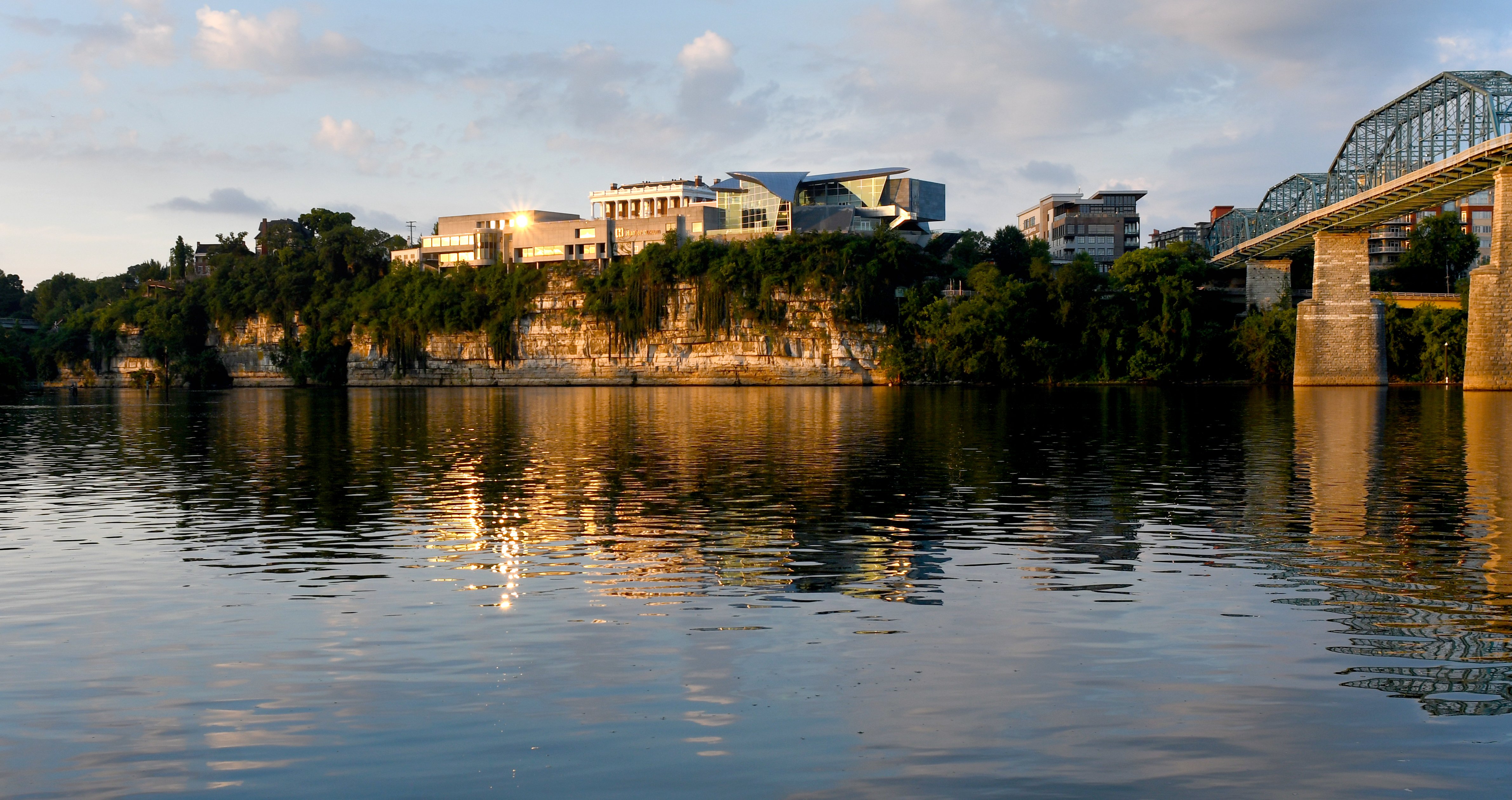 Staff Photo by Robin Rudd / The rising sun reflects off the East Wing of the Hunter Museum of American Art on August 9, 2022. The Hunter is made up of three central buildings, the East Wing completed in 1978, the Hunter Mansion which was built in 1905 and became the museum in 1952 and the 21st Century Waterfront that opened in 2005. At right spanning the Tennessee River is the Walnut Street Bridge that was built in 1890, closed in 1978, and became a pedestrian bridge in 1993.
Staff Photo by Robin Rudd / The rising sun reflects off the East Wing of the Hunter Museum of American Art on August 9, 2022. The Hunter is made up of three central buildings, the East Wing completed in 1978, the Hunter Mansion which was built in 1905 and became the museum in 1952 and the 21st Century Waterfront that opened in 2005. At right spanning the Tennessee River is the Walnut Street Bridge that was built in 1890, closed in 1978, and became a pedestrian bridge in 1993.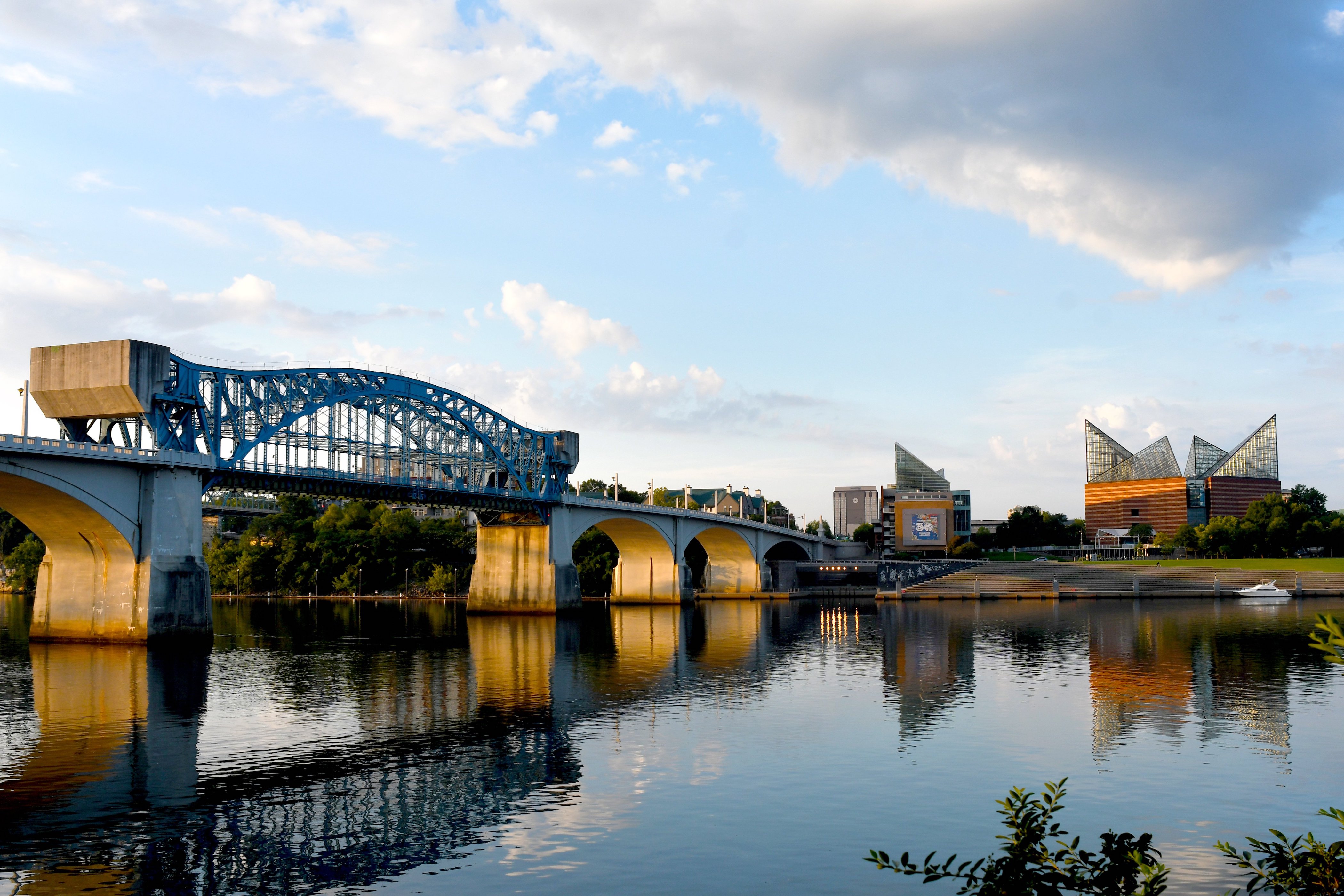 Staff Photo by Robin Rudd / The rising run illuminates the underside of the Market Street Bridge, as the 105 year-old span carries the morning traffic on August 9, 2022. At right, stands the Tennessee Aquarium that fueled the riverfront's rebirth when it opened in 1992 and was expanded in 2005 as part of the 21st Century Waterfront plan
Staff Photo by Robin Rudd / The rising run illuminates the underside of the Market Street Bridge, as the 105 year-old span carries the morning traffic on August 9, 2022. At right, stands the Tennessee Aquarium that fueled the riverfront's rebirth when it opened in 1992 and was expanded in 2005 as part of the 21st Century Waterfront plan